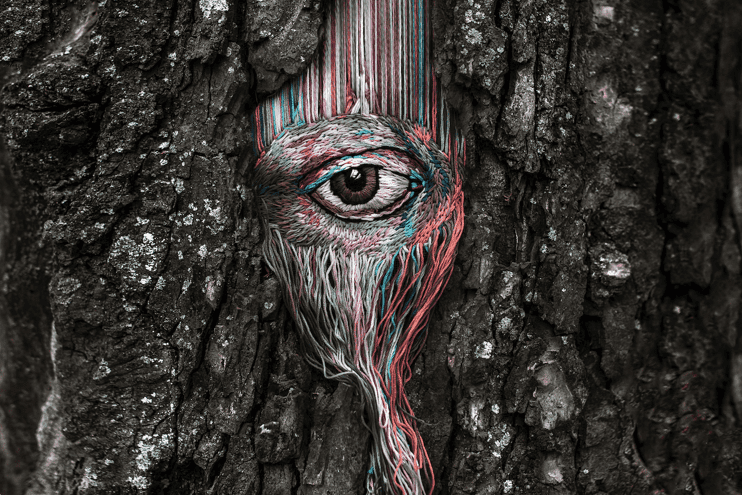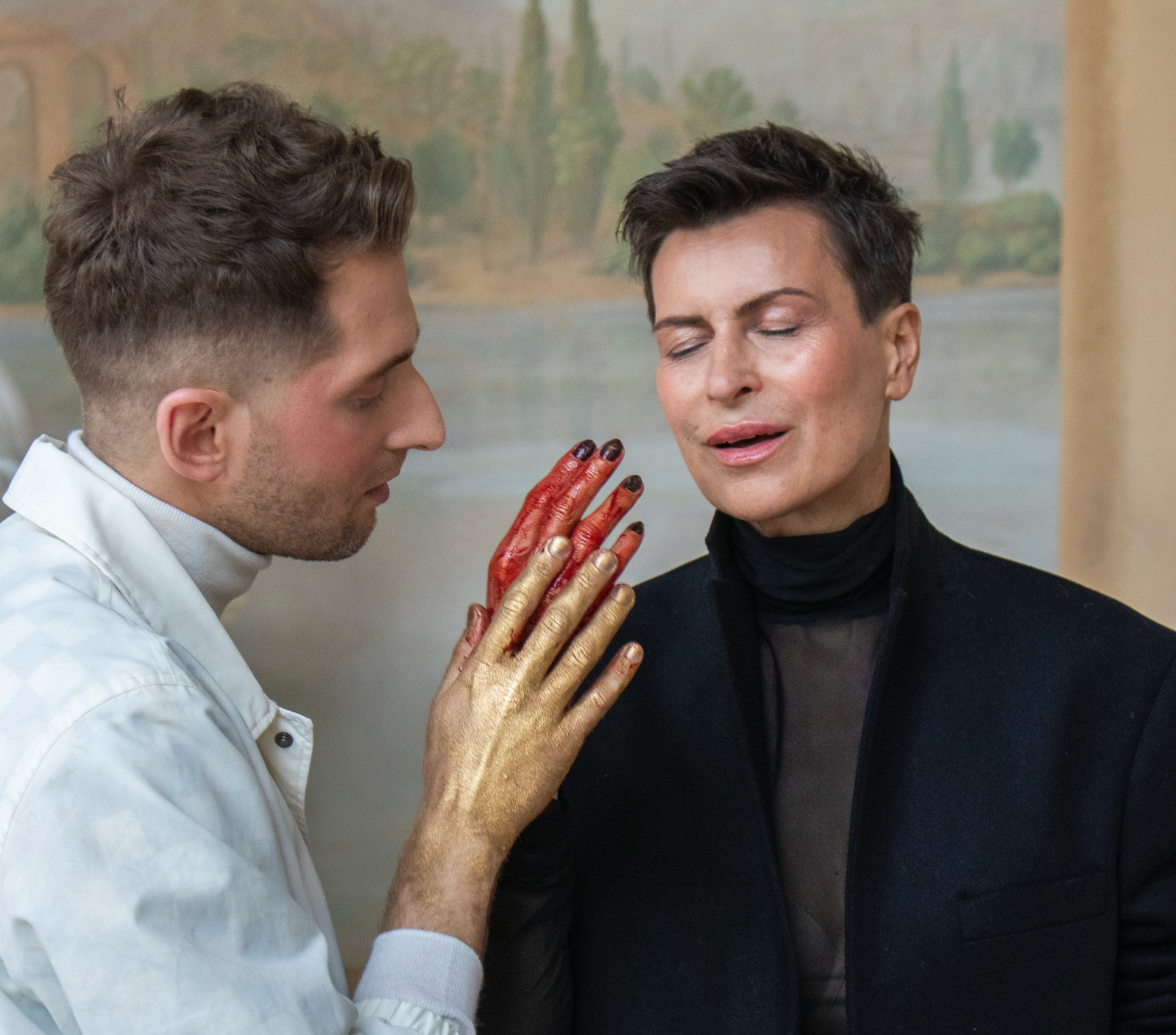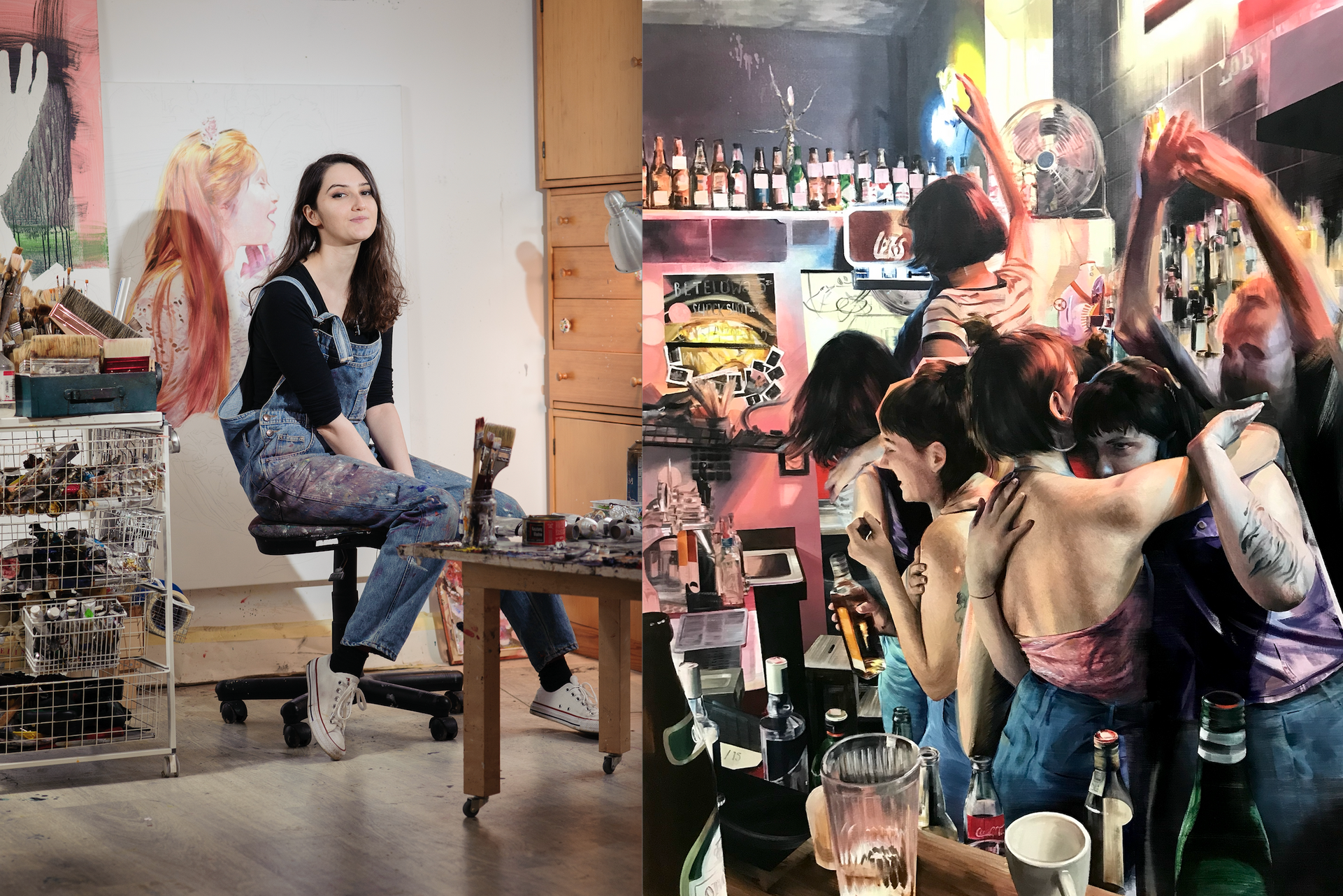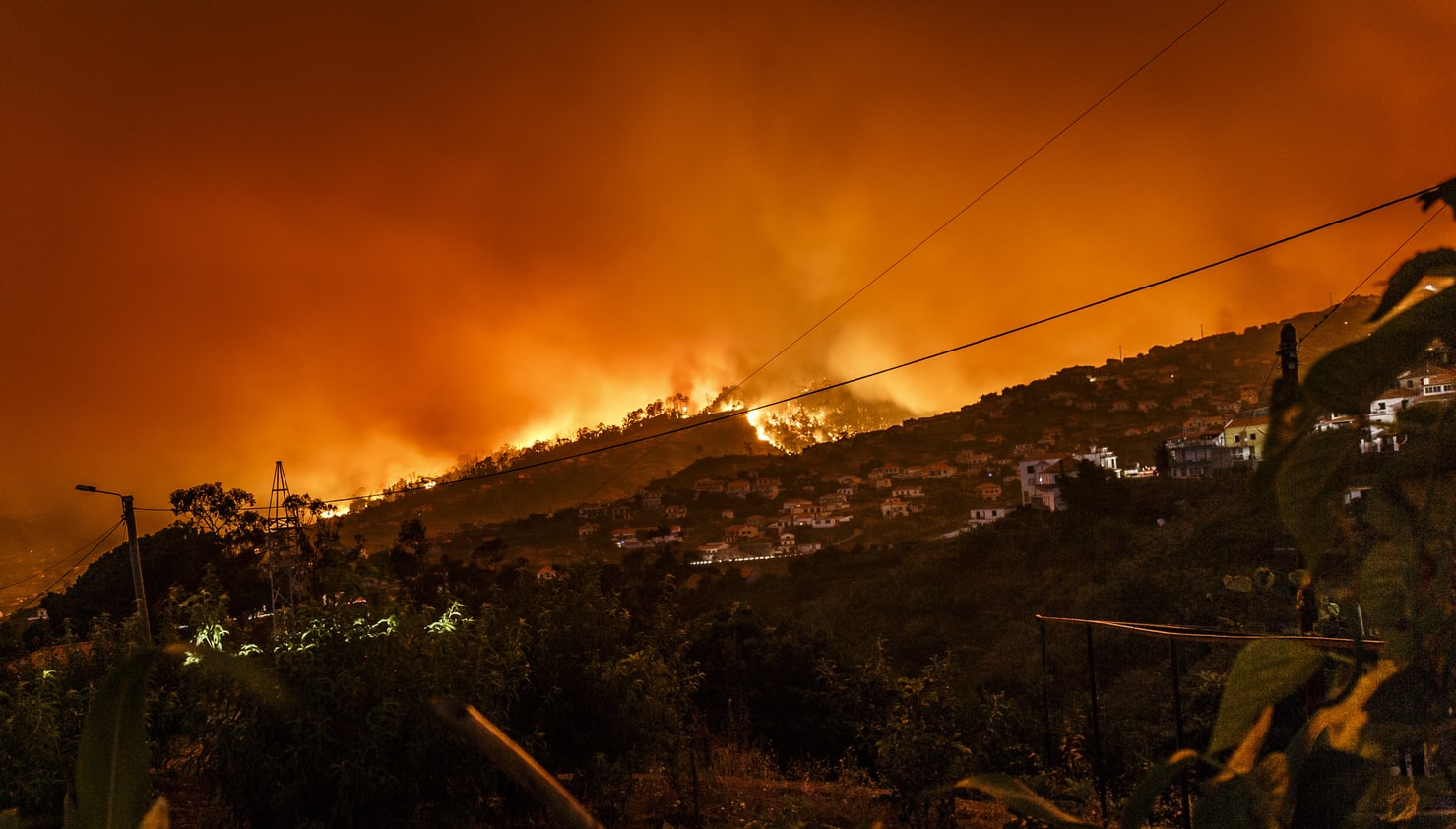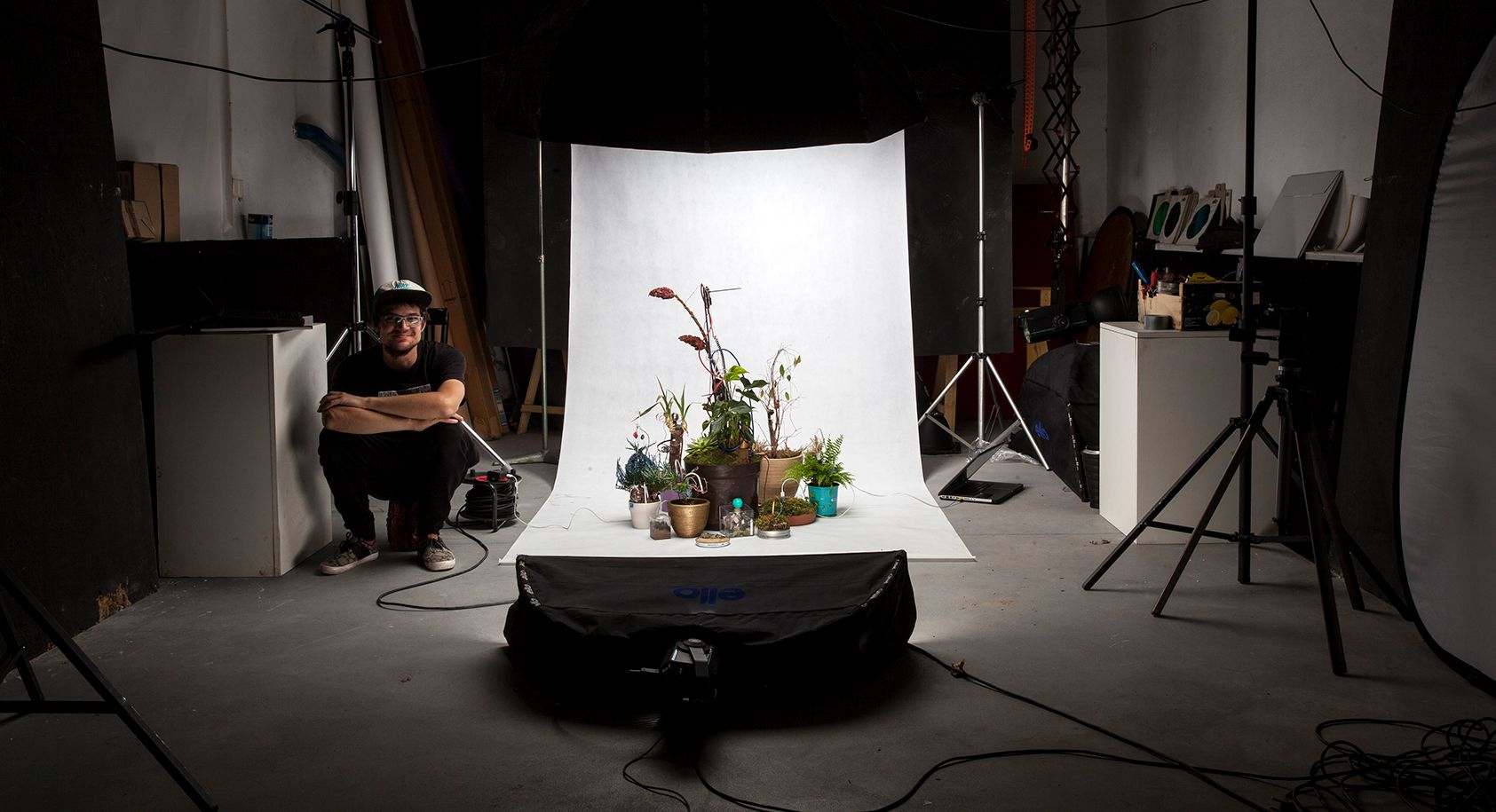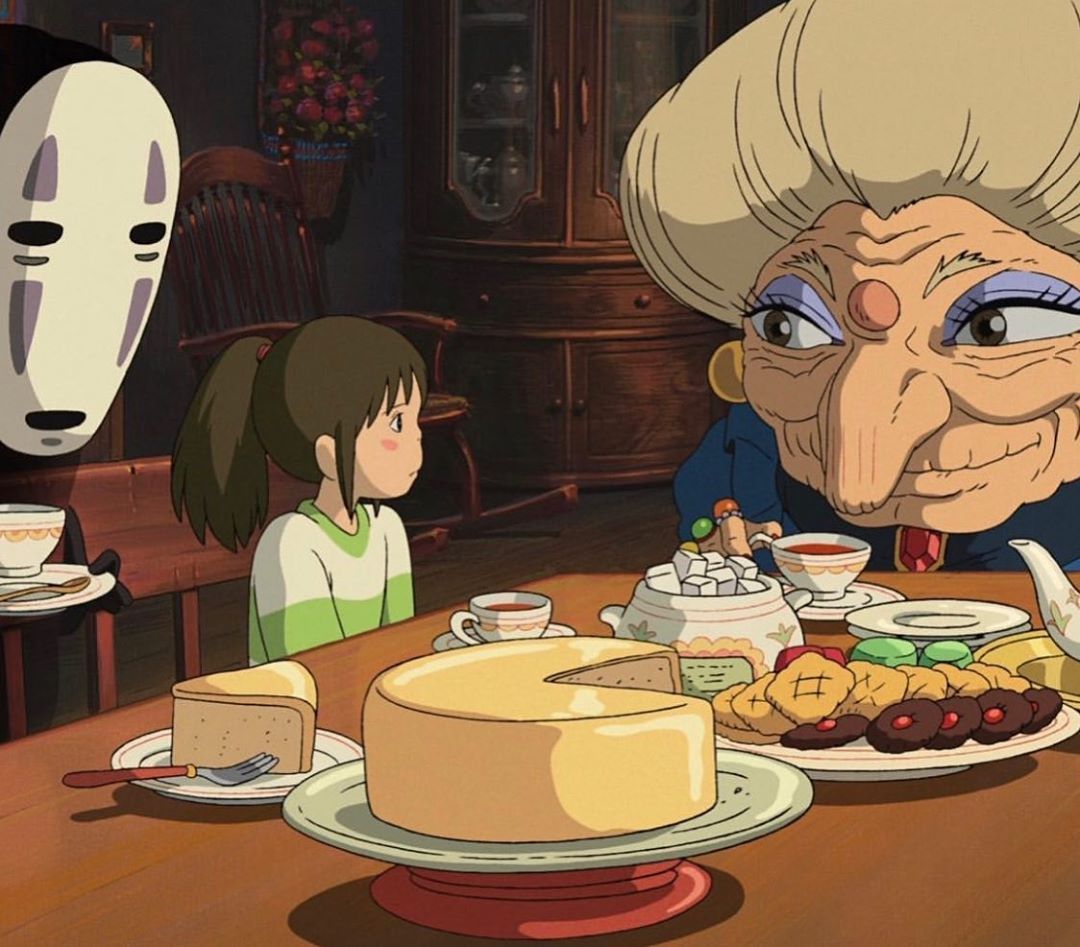Jej twórczość przesiąknięta jest harmonijną koegzystencją z naturą. Podczas spacerów po lesie, artystka zaczęła zwracać uwagę na pęknięcia w korze – miejsca, z których odpadła, mogą być efektem ataku insektów lub choroby, ale też nieuniknioną konsekwencją wzrostu. Yevtukh zaczęła postrzegać je jako blizny i postanowiła wypełnić swoimi pracami: pieczołowicie haftuje kwietne rozkwity i bukiety, ludzkie oczy i dłonie, serca i pejzaże, które potem umieszcza w żywych drzewach.
Jak zaczęłaś haftować i dlaczego wybrałaś akurat to medium?
Diana Yevtukh: Moim pierwszym haftem była pszczoła, którą wyszyłam na dżinsowej kurtce w lato 2018 roku. Dopiero się wtedy uczyłam cierpliwego prowadzenia igły, dobierania odpowiednich nici i osiągania pięknych efektów.
Kocham haftować, bo daje mi to spokój. Mogę tygodniami pracować nad jednym projektem, dumać nad finalną postacią mojego dzieła, pracować każdej nocy i w weekendy. Tempo jest relaksujące, pozwala zdjąć z barków wszystkie zmartwienia, które trapiły wcześniej, za dnia.
Diana Yevtukh: Life is breaking out of the mysterious hideaways
Diana Yevtukh: Life is breaking out of the mysterious hideaways (detal)
Jaki aspekt codziennego życia najbardziej cię inspiruje?
Codziennie dużo spaceruję, obserwuję świat i rozkoszuję się pięknem każdego detalu. Podczas spacerów, w zimę 2018 roku, zaczęłam myśleć o pustych miejscach w korze drzew, które codziennie widuję, rosnące niedaleko ścieżek i chodników. Zobaczyłam je jako blizny, próżnię, która zaistniała po to, by wypełnić ją pewnym oświadczeniem. Te myśli zajęły moja wyobraźnię na długie miesiące, a potem oczywiście zderzyły się z myślami o haftowaniu – w końcu tylko kilka momentów wcześniej wyszywałam swoja kurtkę i właśnie szukałam okazji, by wykonać więcej haftów.
Pewnego razu, gdy dumałam nad tematyką pracy, zaczęłam przypominać sobie pewne spojrzenie i poczułam, że jego źródłem była dusza drzewa. Było to bardzo wyraziste uczucie: byłam pewna, że drzewo obserwowało mnie, gdy mijałam je podczas spacerów. Szczęśliwa i podekscytowana, zaczęłam wcielać to przeświadczenie w życie za pomocą igły i nitki. Podczas długich wieczorów i weekendów kolory i formy ożyły, powoli osiągając formę drzewnej duszy w pracy przedstawiającej oko, zatytułowanej: Multitudes of life hidden in the plain sight (ang. Wielości życia schowane na widoku).
Gdy haftowałam w 2019 roku, cieszyłam się, że niedługo nadejdzie wiosna, rozkwitną kwiaty, wszystkie istoty obudzą się do życia. Drzewa nadal mnie inspirowały – nie mogłam przestać wyobrażać sobie innych drzewnych dusz. Zainspirowana wiosną, wyobraziłam je sobie jako kwiaty.
Diana Yevtukh: Stich be stich cracked and forgotten wall blossoms with a new life
Jak określiłabyś swoją relację z naturą?
W okresie, kiedy powstała ta seria haftów czułam, że świat zaraz obudzi się ze snu zimowego, a życie wypłynie ze swoich kryjówek. Postanowiłam odkryć duszę drzewa, które puszczało pąki wcześniej niż inne, by złapać pierwsze promienie słońca. Tak, ścieg za ściegiem, narodziła się druga praca.
Gdy wiosna rozkwitała w lato, ja nadal byłam oczarowana dudniącą ciszą i stoickim pięknem zabliźnionych drzew wokół. Moje myśli zajmowało poszukiwanie odpowiedzi na złożone pytanie: co konstytuuje przemoc wobec natury i pośród wszystkich żywych stworzeń? Przecież otacza nas tyle cierpienia. Ludzie, zwierzęta, drzewa, wszyscy cierpimy i doświadczamy przemocy. Gdzie w nas tak naprawdę wydarza się cierpienie? W sercu, a może w duszy? Dlatego to właśnie serce stało się inkarnacją kolejnej drzewnej duszy w mojej trzeciej i ostatniej pracy z tego cyklu: Healing the wounded heart of Nature (ang. Leczenie zranionego serca Natury).
Dzieci i dorośli, zwierzęta i rośliny, w moim rozumieniu wszyscy jesteśmy częścią Natury. Nigdy niekończące się cierpienie rani jej serce i duszę. Ale naszą ludzką super-mocą jest to, że możemy uleczyć i pielęgnować życie wokół nas. Ten haft jest wezwaniem, by traktować wszystko co żywe z miłością, nie z okrucieństwem. To wezwanie do tego, by wyleczyć rany i zaprzestać przemocy.
Diana Yevtukh: Remedying the wounded heart of Nature
Diana Yevtukh: Remedying the wounded heart of Nature (detal)
***Oryginalny tekst angielski***
Artist Diana Yevtukh displays her work in an uncanny manner. She takes her embroidery out of its frame, and places it in splits that may be found in the bark of a living tree. By that, she "fixes them", simultaneously giving them a new dimension.
A sense of harmony with natural world transpires through her work. She likes to take long walks in the forest, and while doing so, she started paying attention to the splits and wounds of trees. Places that are stripped of bark may be an aftermath of a disease or insect attacks, but they may also be an unavoidable consequence of growth. Yevtukh started to think of them as scars and decided to fill the empty space with her work. She crafts floral blossoms, landscapes, human eyes and hands in a meticulous manner, and later frames them in a living tree.
How did you start to broider and why did you choose this medium?
Diana Yevtukh: My first embroidery was the bee I made on the back of my denim jacket during the summer of 2018. I was still learning: patiently conducting the needle with the right threads in a beautiful way. I love embroidery because it brings me so much peace. I can stretch one work for weeks, muse on the final effect and how will it look like, working every night and every weekend. The pace is relaxing, it takes your mind off of anything you are worrying about during the day.
What aspect of everyday life inspires you the most?
I do a lot of walking every day, I watch the world outside and relish the beauty of every little detail around. During my walks in the winter of 2018, I started thinking about the empty spaces in the bark of the trees I see near sidewalks every single day. I was seeing them as scars, but also as an emptiness which is out there to be filled with a statement. These thoughts preoccupied my imagination for months, and obviously eventually they merged with my embroidery thoughts, as only few moments earlier I was sewing the bee into my denim jacket, and looking to do more embroideries. At one moment during my musings on the topic, I started to reminisce a certain gaze, and I felt like if it was coming from the soul of the tree. It was a very distinct feeling that the tree was looking at me every time I passed by. Thrilled and excited, I started to put this feeling into life, with a needle and threads. Along the process, over the long evenings and weekends, colors and forms came alive, slowly embodying the soul of the tree in my work titled “Multitudes of life hidden in the plain sight”. When 2019 started I was excited that the spring is about to arrive, with flowers blooming, and the life waking up. The trees continued to inspire me still, and I couldn’t stop imagining other incarnations of the tree souls. Spring-spired, I envisioned them in the form of flowers.
How would you describe your relationship with nature?
Back then I was feeling that the world is about to wake up from its winter sleep, and the life was about to break out of its hideaways. I decided to reveal an incarnation of the soul of the tree, which was breaking out early to catch the first warm rays of the sun. Stitch by stitch, my second work in the series was born. As the spring was flourishing out into the summer, I was still mesmerized by the loud silence and the stoical beauty of the scarred trees around me. My mind was getting embroiled deeper into the complex question of what constitutes the violence against nature, and among all the living creatures in general. Obviously, there is so much suffering around. People, animals and trees, we all get subjected to violence. So where exactly in us does the suffering happen? Is it heart, or is it soul? That's how a heart came to be another incarnation of a soul in my third and conclusive work "Healing the wounded heart of Nature". Kids and adults, animals and plants, we are all part of Nature in my understanding. The never-ending suffering wounds the heart and the soul of Nature. But our superpower as humans is that we can heal and cherish the life around us. This embroidery is a call to treat the living with love and not cruelty. This is a call to heal the wounds and cease the violence.

Diana Yevtukh: Multitudes of life hidden in the plain sight

